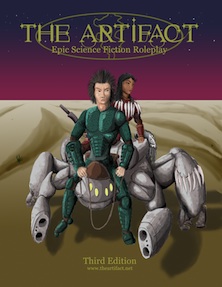I’ve started a Google Docs document for writing the next version of The Artifact. I’m trying for now to only occasionally reference 3rd edition. My writing is more casual now and I hope that makes it better to read. I don’t want the old text to change my current expression of ideas.
A lot has fallen into place but I still have unresolved questions in some basic procedures. In 3rd, Advantages and Impairments got rid of some roll modifiers. In 4th theres very little addition and subtraction going on because Boosts and Drains are taking center stage.
The question I have is, if a character has a Boost and a Drain, how do they interact? My intention at the moment is one Drain cancels out a Boost. Only if you have more Drains than Boosts do you roll for Drains.
For some people that’s going to seem a little unfair. You could have a Skill of 9 (the highest possible) and a Drain of 1 (the lowest possible) and they’d cancel each other out.
This kind of thing is going to take some new thinking on the players part because a character can create Boost with an action. Because you can have multiple Boosts in each roll, creating a low level Boost will negate that low level Drain and you get your skill back.
Something I’m having the hardest time conveying is the idea that the players choose how to apply these negations and the rolls of their dice to match their Boosts. I don’t know if this is a natural concept or a difficult one. I also don’t know if some people would pick up on it and others wouldn’t.
When I started brainstorming this version, I had a lot of ideas for special conditions and their mechanical effects but I recently realized that they could be Boosts. Since I had the idea for players creating Boosts then these effects might as well fall under that concept. The challenge now is to lay out those conditions as created Boosts without making it seem like those are the only options. The tool is multipurpose but it’s also vauge so I want the examples to spur creativity but not limit it.
I’m going to the Queen City Conquest this weekend and running a game of The Artifact. The hard part for me is going to be playing 3rd Edition and not slipping into new tools that we’ve been testing.


 The Free RPG Blog
The Free RPG Blog